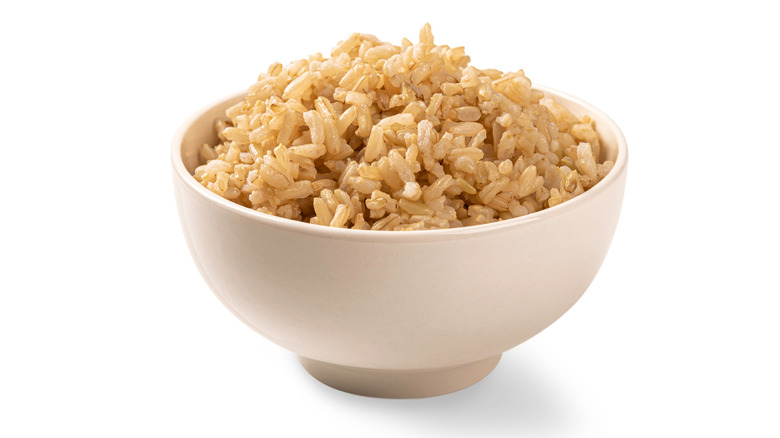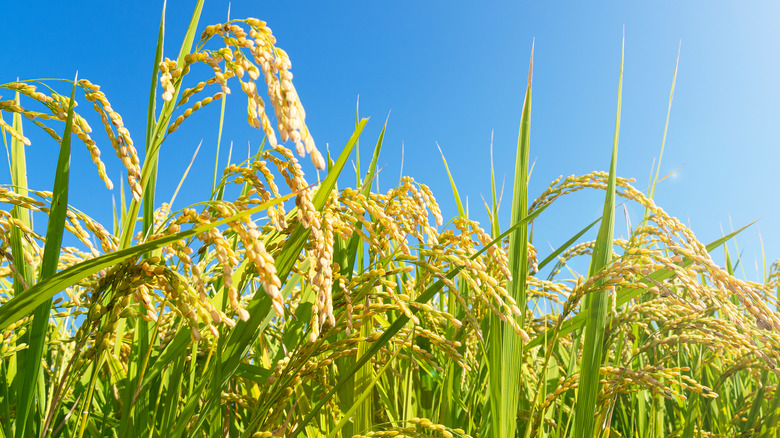The Green Grains In Your Brown Rice Explained
Green on your brown potatoes is a no-go, but what about green grains in your brown rice? Sometimes a greenish color can indicate the presence of mold, and green is also associated with unripe foods. So which is it for the green grains? According to Seattle's PCC Community Markets, it's the latter. No need to ditch that brown rice after all for the slightly less nutritious white rice tucked in the back of your cabinet. The reason for the green in your gains is chlorophyll, which is the same pigment that causes the green color in unripe bananas or tomatoes.
Apparently this is a common question for brown rice eaters, as the Carolina rice company addresses this very topic on their FAQ page. The answer the rice brand provides: the green grains are immature kernels. Should you still eat them? Carolina says they have just as much nutritional value as the mature brown grains in your bag, so there is no reason to avoid them.
For rice, green could mean quality
The green grains could actually indicate you've picked a good quality brown rice, according to the PCC Community Markets. The chlorophyll in the grains indicate that they came from the bottom of the rice stalk, maturing more slowly than those at the top and hanging on to their green hue. If your bag of brown rice doesn't have any green grains, then it's probably been "gassed" to get rid of the chlorophyll.
So now that you know a few green grains can be a good thing, how can you tell if your brown rice has gone bad? Dry brown rice goes bad in less time than white rice (three to six months versus two years), according to Healthline, because it "is not milled or polished [and] has a higher fat or oil content." The outlet recommends checking for things like holes, bugs, and moisture, these are all signs that your brown rice is past its prime. You can also look for a bad smell, oily texture, or strange colors — but remember, green is a good thing.

